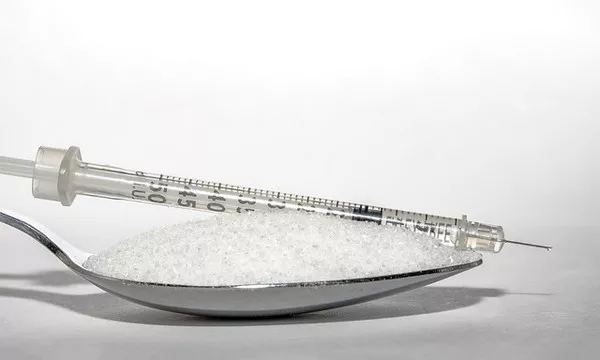The incidence of insulin-induced amyloidosis distant from an injection site is unknown. Due to its rare nature, only a few case reports have been documented, with even fewer describing amyloidoma as distant from the insulin injection site. We present a case of a 52-year-old male with a left arm mass that was determined to be cutaneous amyloidosis and successfully treated with total excision of the mass. Histopathological examination with Congo red stain demonstrated classic characteristics of amyloidosis. We present this case report to increase awareness of this relatively rare occurrence.
Introduction
Approximately 50 human diseases involve amyloid protein misfolding, which can present systemically or locally at any age. In systemic amyloidosis, deposits are derived from serum plasma proteins, while in localized amyloidosis, proteins are produced by cells at the deposition site. Amyloid is a pathological assembly of abnormal fibrillary proteins forming insoluble plaques, leading to tissue impairment and organ dysfunction.
Amyloidoma, also known as tumoral amyloidosis, is a solitary collection of amyloid protein that arises with or without systemic amyloidosis. It can be light chain amyloidosis (AL-type) or amyloid serum A protein (AA type). The incidence of amyloidoma is rare, and research suggests that up to 7% of amyloidomas may develop systemic amyloidosis.
Type 2 diabetes mellitus patients are prone to develop amylin islet amyloid polypeptide (AIAPP amyloid) plaques in the pancreas, which can also appear extrapancreatically at repeated insulin injection sites. This case report describes a rare instance of insulin-induced amyloidosis developing at a site distant from the insulin pump, requiring surgical excision in a type 1 diabetes patient.
Case Presentation
A 52-year-old male with a history of controlled type 1 diabetes mellitus presented with a firm, mobile mass on the distal third of his upper left arm that developed over the last 10 years. He had transitioned from an insulin pump to an Omnipod® in the past year. Despite maintaining an HbA1c below 7.0 mg/dl, the lesion grew significantly larger and firmer over the last two years. An MRI revealed a 4.6 cm mass on the fascia of the lateral biceps. A non-diagnostic needle biopsy was followed by successful surgical excision of the calcified mass. Histologic sections showed amyloid deposits confirmed by Congo red stain, and mass spectrometry identified the AIns (insulin) subtype.
Discussion
The first reported case of localized AIns-type amyloidosis at the injection site was in 1988 by Endo et al. Since then, over 75 similar cases have been documented, suggesting an increase in incidence. Factors influencing development include insulin dosing, injection technique, absorption, and clearance. The overlap between insulin-derived amyloidosis and lipohypertrophy may lead to misdiagnosis, as amyloidosis presents as a firmer, non-regressing mass. This patient’s non-systemic, AIns-type amyloidosis developed distant from the insulin pump access port, a rare occurrence.
Theories suggest that amyloid fibrils may migrate through the bloodstream to distant sites, promoting amyloid aggregation through seeding. Poor diabetic control and increased insulin dosage have been associated with amyloid formation. Changing injection sites may reduce daily insulin requirements and improve blood glucose control.
Conclusions
This case highlights a rare instance of insulin-induced amyloidosis at a site distant from the insulin pump, treated successfully with surgical excision. As insulin-derived amyloidosis should be considered in diabetic patients with unknown etiology masses, routine changing of injection sites is recommended to prevent amyloid formation and ensure consistent absorption. Further research is needed to understand the mechanism of distant amyloidosis formation and develop preventive measures.
Related topics:
Study Identifies Women with Gestational Diabetes Personalized Treatment
Systematic Diabetes Screening Reduces Peri-operative Infections in Cardiac Surgery Patients
J-shaped association of the triglyceride glucose-body mass index with new-onset diabetes


























